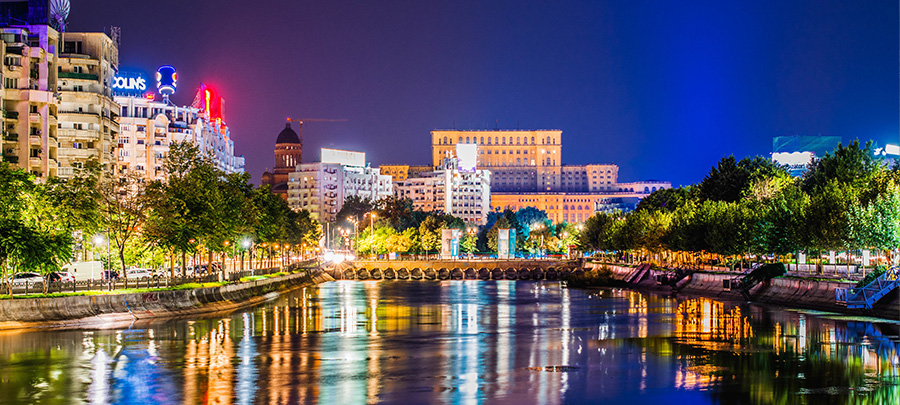

This Latin nation squeezed between Slavic countries remains an extremely attractive market for international wine producers because of its long affinity with the grape and its wine scene that is constantly developing. Romania is also one of Europe’s most promising export destinations, with steady and significant growth in wine imports in the last years. Romania’s wine imports reached US$142 million in 2023, a 15% increase compared to 2022 and an amazing 100% increase compared to 4 years ago, in 2019.
Supermarkets, the Mecca of wine sales
After the outbreak of the pandemic, a significant part of wine sales from the HoReCa channel and specialty stores moved to retail, although producers had to bear the higher costs of listing wine in supermarkets. Once the pandemic ended, supermarket shelves remained more crowded and the wine portfolios more diversified. In terms of price tags, consumers won`t have to dig deeper into their pockets due to producers` increased competition, but producers will face higher marketing costs compared to the period prior to the pandemic.
Dedicated wine stores, which offer a larger variety of brands from around the world, and expert staff, started to appear in the last years even in Romania’s mid-sized towns, and are also growing as a channel. The wine importers who own most of these stores are also involved in tastings, expos and education, shaping the Romanian wine market.
Current wine consumption patterns
The rural population continues to maintain its separate different consumption patterns, where homemade wine is drunk in isolated areas, while the majority of the population, especially the urban residents are becoming more refined, creating a rising demand for qualitative and unique imported wines.
Although Romanians are generally traditionalist, consuming the wines and labels they know, wine consumers are also heavily segmented by age, education, income, area and many other factors, creating space for many types of wine of different qualities and prices to enter the market. Additionally, today’s consumer is educated and attracted to learn about wines and to consume the wines he has tried before.
Romanian buyers are beginning to prefer foreign wines leading to a rise in wine imports on the market. The main wine imports on the Romanian market come from countries in the European Union such as France, Germany, Italy, Spain, and Hungary as well as neighbor Moldova, but there`s also an interest in Argentinian or Chilean wines.
Romanian wine importers say the market is under continuous development as consumers are becoming increasingly selective with their culinary choices and drinks that pair with their menu, leading to positive demand and diversity in the wine market.
E-commerce platforms and e-shops for wine sales are also seeing solid growth. Romanian wine importers are investing in online retail channels, providing consumers with convenient access to a diverse range of imported wines. Enhanced online shopping experiences, including detailed product information and virtual tastings, will drive this trend. The country’s excellent internet speed and coverage also help fuel this shift.
Preference for premium wines, diverse origins
With Romania’s growing wine imports we also see a preference for wines from more remote areas of the world. There’s still a major focus on premium wines from the most prestigious wine-producing countries – France, Italy and Spain, thanks to the growing middle class and increasing disposable incomes. This is especially true in the country’s larger cities like Bucharest, Cluj Napoca, Iasi or Timisoara.
But wines from Chile, Argentina, South Africa and especially New Zealand are doing very well, thanks to competitive pricing and the adventurous palate of the consumers.
In a top 3 from last year, Romanian wine importers focused on wines from Italy (imports of US$ 40.7 million) , Moldova (US$ 35 million) and France (US$ 21.8 million), while German wines also did very well (US$ 11.6 million).
Wine Importers from Romania:
De Silva Exclusiv Srl
Address: Daniel Danielopolu Street, No. 44a, Bucharest
Phone: +40 21 2029929
Website: https://desilva.ro/
Bdg Import Srl
Address: Traian Street, No. 184-186, Bucharest
Phone: +40 21 3238670
Website: https://www.bdg.ro/
Wine Focus Intertrade Srl
Address: Bucureștii Noi, No. 216, Bucharest
Phone: +40 722 345347
Website: https://winefocus.ro/
Wine Point Srl
Address: Baciu’s Way, No. 1-3, Cluj-Napoca
Phone: +40 26 4449794
Website: https://www.winepoint.ro/
Vinibuoni Trading Srl
Address: Nicolae G. Caramfil Street, No. 12, Bucharest
Phone: +40 31 0050415
Website: https://vinibuoni.ro/
Producers interested in the Romanian market can find a database with advanced details about Romanian wine importers, distributors and retailers here.